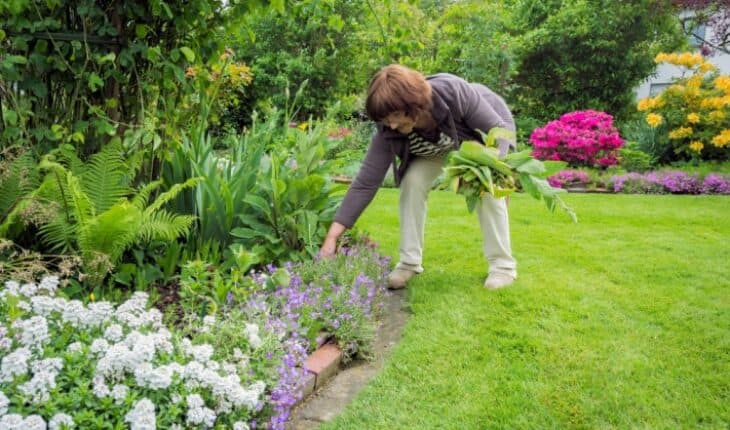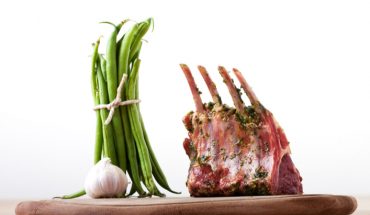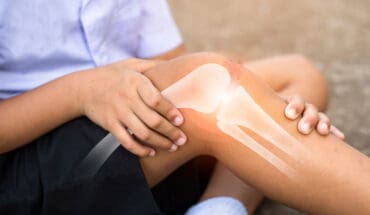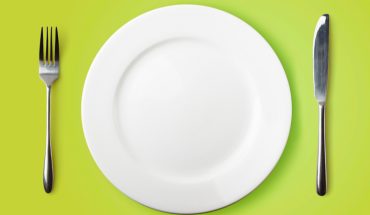Cultivating positive joint health habits during national gardening week: Not only is it one of the nation’s favourite pastimes, but gardening is also notoriously good for our mental and physical wellbeing. 87% of UK households have a garden1 and over 50% of people aged 55+ say they enjoy gardening2. In fact, encouraging people of all ages to spend time outdoors in nature whilst keeping mobile and active is part of “social prescribing” on the NHS.
However, alongside the simple pleasure so many people gain from gardening. some of the core activities such as weeding, pruning, digging and lifting pots can be strenuous and put a strain on joints such as our knees. The theme of this year’s RHS National Gardening Week (29th April – 5th May) is ‘Knowledge is Flower’, focusing on debunking and demystifying the wonderful world of gardening. Beyond the purely horticultural, we think that this approach should also apply to our wellbeing and gardening. The more we understand about how our body responds to the stresses and strains of this physical activity the more we can do to help ourselves prepare for and recover from gardening.
As this celebration of gardening approaches, we ask Charlie Goodchild BSc (Hons) MSc MCSP, specialist musculoskeletal physiotherapist and founder of Better, a Healthcare business based in London to give some top tips on how to get yourself ready for a stint in the garden and empower yourself with the know-how to support your joints as you “dig in”:
- Get fit first – exercise is an important and easy way to physically challenge your system to help build muscle to support and restore your joints and increase your strength, mobility and endurance. You can try a local exercise class, or you might prefer a yoga or pilates class – the latter are often run by physiotherapists who are trained to observe your movements and make adjustments in line with any joint issues you may have. All types of exercise will help with joint stiffness, increase flexibility and can be modified to suit your abilities. Once you have learnt these routines, you can also practise at home – you could even move outside to exercise in the garden with the added benefits of the fresh air and the view!
- All the gear – equip yourself – if you do suffer from knee pain or lower back issues, look for products that can help to support you whilst you move around the garden. Make sure that you are using the correct type of tool for the job, invest in a decent knee-mat, use a garden stool to reserve energy and take the load off weight bearing joints, buy compost bags with added handles and look for specially adapted tools e.g. with long-handles and good grip to avoid excessive stretching, making jobs like digging and weeding easier and help you to maintain a strong posture. For some people, it helps to swap manually operated equipment for power operated gadgets e.g. use a hedge trimmer rather than those rusty garden shears! If you’re having a knee osteoarthritis “flare up”, remember it’s also fine to get professional help or support from your family or friends for the repetitive and heavy work to leave time for you to focus on the slightly less arduous and more enjoyable aspects of gardening.
Build up gradually– gardening is physically strenuous. The positive of this is that it helps to improve strength and stability, the downside is that it is easy to do too much, too soon, especially if you haven’t been in your garden much over the winter.
Jobs such as getting out and putting away tools in the garden shed, carrying garden waste, bending down to weed and reaching up to prune plants can be awkward and cause stress to your body that it isn’t used too. This can sometimes lead to injury.
Try these simple exercises before and after gardening to warm up the muscles around the knee:
- Lying knee bend: Lie down with both knees straight, slowly bend one leg by sliding your foot along the floor or bed towards you, as far as is comfortable. Hold the positing for 2 seconds before straightening your leg. Repeat the exercise with the other leg. Add an extra stretch by “hugging” your leg when it is at its most flexed position.
- Sit to Stand: sit on a chair, with your arms across your chest. Drive the hips up into standing. Slowly lower the hips back into sitting. Try to keep your trunk upright throughout.
- Forward bends: Reach down towards your toes trying to stretch your hamstrings and your back. Hold the position for 2 seconds before returning to standing.
If you have knee pain add exercise into your routine gradually – try 5 repetitions of each exercise when you first start, and then try to build up to 10 reps over the next few weeks. Rest for a minute in between exercises and try to repeat the above once or twice a day. If your knee pain gets worse whilst trying out these exercises, it’s a good idea to contact a healthcare professional to discuss your symptoms.
- Keep moving – staying active outside is vital to keep your joints healthy. For example, walking is a great and accessible way to exercise, particularly if you suffer from joint pain. You really can take it at your own pace, and it will help to keep you in good cardiovascular shape and work your muscles whilst enjoying the great outdoors. Have a change of scenery if you can and broaden your horticultural horizons with a walk around a local garden centre, a visit to a RHS or National Trust Garden, a flower show or a stroll in the park.
- Listen to your body – don’t ignore warning signs such as continuous pain and discomfort which prevent you from your usual activities or routines such as walking, gardening or sleeping. In fact, for many of the 8.5 million people in the UK living with knee osteoarthritis (OA),(3) life is hampered by constant pain, limited mobility, and difficulty with simple, everyday tasks. However, many people delay seeking professional help for knee pain assuming it’s an unavoidable part of ageing or that the only option will be surgery e.g. a total knee replacement.
But there is a new treatment that I think is a “game-changer.” Arthrosamid® is a single treatment hydrogel injection proven to offer respite from knee osteoarthritis, maintaining significant, long lasting reduction knee OA pain (even three years post-treatment) – AND without the need for surgery.(4-5). In my experience, in the weeks following the injection, the prior pain cycle of knee osteoarthritis is broken and patients can commit to a programme of rehabilitation and exercise which support tissue healing, muscle strength and bring long term improvements in mobility.
1. Horticulture.co.uk/gardening/statistics UK Census 2021
2. Statista Research Department. (2021c, August 20). Share of the public that enjoy gardening in the United Kingdom (UK) as of December 2020, by age. Statista. Retrieved March 15, 2023, from https://www.statista.com/statistics/1 3. nice.org.uk/guidance/cg177/documents/osteoarthritis-update-final-scope2
4. Bliddal, H., et al. (2023) A Prospective Study of Polyacrylamide Hydrogel Injection for Knee Osteoarthritis: Results From 3 Years After Treatment. Osteoarthritis and Cartilage. Vol 31(5): 682-683.
5. Bliddal, H., et al. (2024) 3 year follow-up from a randomized controlled trial of intra-articular polyacrylamide hydrogel injection in subjects with knee osteoarthritis. Poster LB-31, OARSI 2024 World Congress on Osteoarthritis.
- The da Vinci 5 Robot Is Set To Transform Bariatric Care: - 31st March 2025
- Beyond money: the hidden drivers fuelling child food insecurity - 31st March 2025
- Tobacco and Vapes Bill - 31st March 2025






